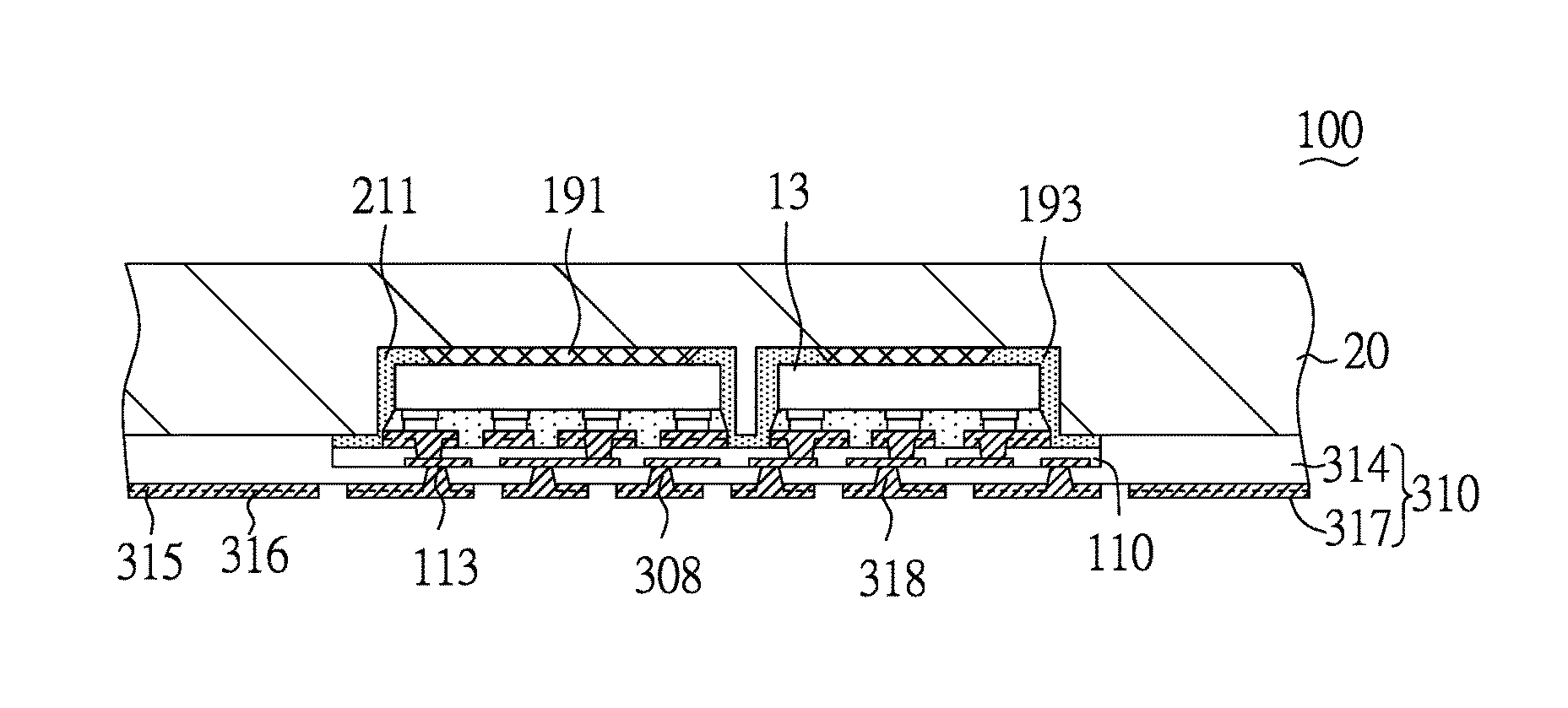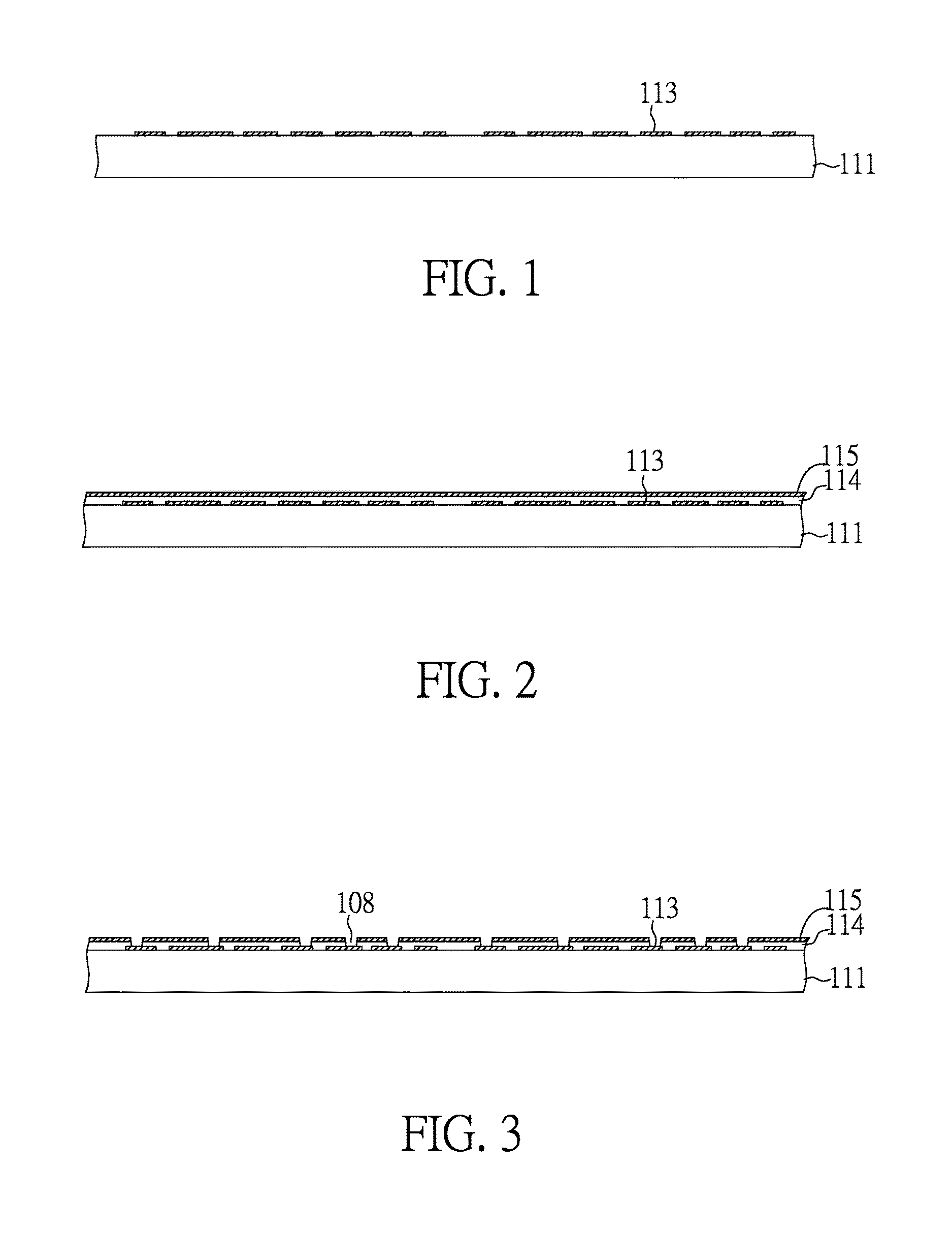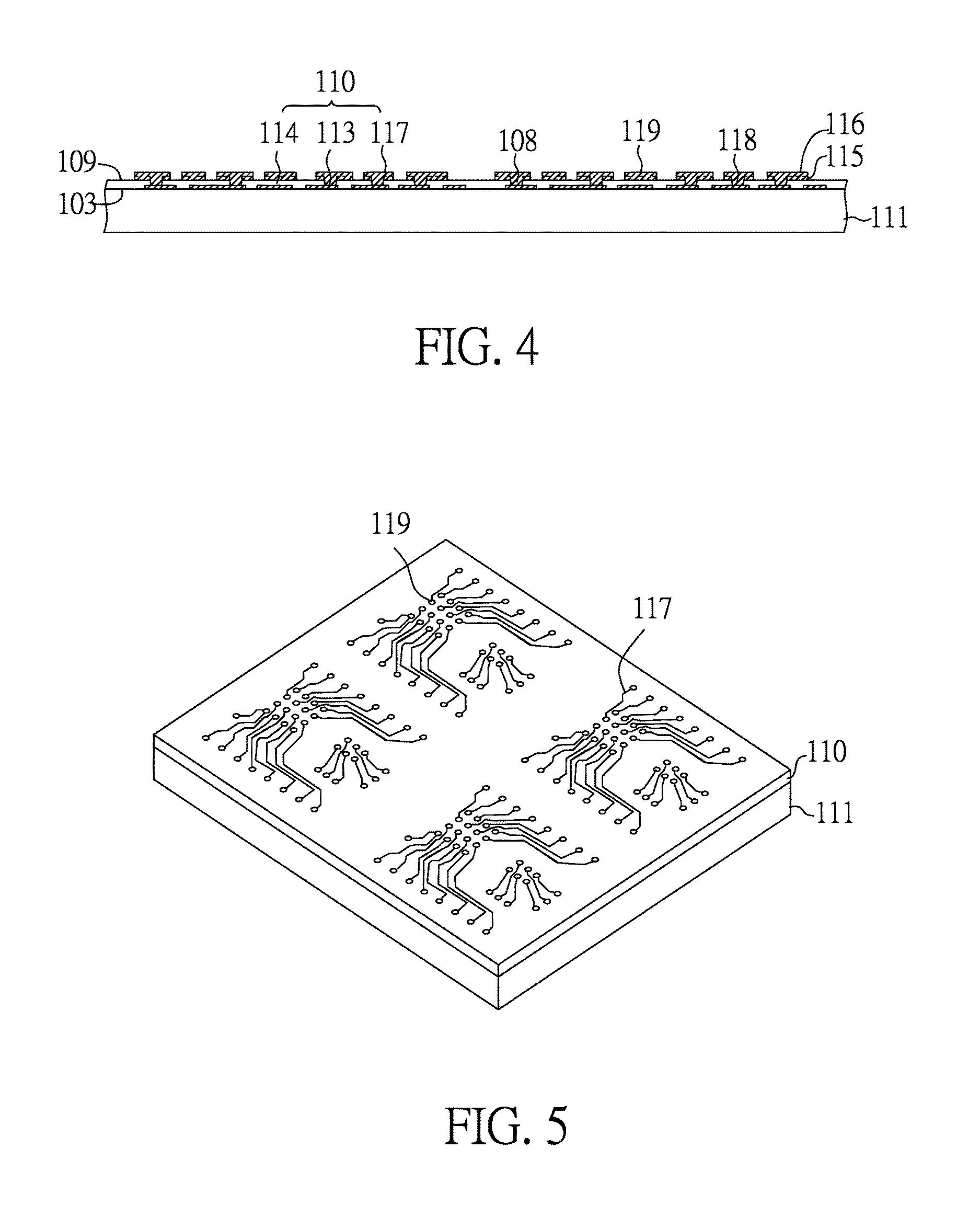Thermally enhanced semiconductor assembly with heat spreader and integrated dual build-up circuitries and method of making the same
a technology of heat spreader and semiconductor assembly, which is applied in the direction of semiconductor devices, semiconductor/solid-state device details, electrical apparatus, etc., can solve the problems of performance degradation, many performance-related deficiencies, and significant thermal, electrical, form-factor and reliability challenges of the semiconductor packaging industry
- Summary
- Abstract
- Description
- Claims
- Application Information
AI Technical Summary
Benefits of technology
Problems solved by technology
Method used
Image
Examples
embodiment 1
[0059]FIGS. 1-26 are schematic views showing a method of making a semiconductor assembly that includes semiconductor devices 13, a heat spreader 20, a first build-up circuitry 110 and a second build-up circuitry 310 in accordance with an embodiment of the present invention.
[0060]FIG. 1 is a cross-sectional view of the structure with first contact pads 113 deposited on a sacrificial carrier 111. The sacrificial carrier 111 typically can be made of any conductive or non-conductive material, such as copper, nickel, aluminum, chromium, tin, iron, stainless steel, silicon, glass, graphite, plastic film, or other metals, alloys or non-metallic materials. The thickness of the sacrificial carrier 111 preferably ranges from 0.1 to 10 mm. In this embodiment, the sacrificial carrier 111 is made of an iron-based material and has a thickness of 1.0 mm. The first contact pads 113 typically are made of copper and can be pattern deposited by numerous techniques, such as electroplating, electroless ...
embodiment 2
[0081]FIGS. 27-36 are cross-sectional views showing a method of making another semiconductor assembly in which the heat spreader has a registration mark outside its cavity and is further electrically coupled to the second build-up circuitry in accordance with another embodiment of the present invention.
[0082]For purposes of brevity, any description in Embodiment 1 above is incorporated herein insofar as the same is applicable, and the same description need not be repeated.
[0083]FIG. 27 is a cross-sectional view of a heat spreader 20 with a registration mark 213 around the entrance of cavities 211. The registration mark 213 can be formed by removing selected portions of a metal plate 21 or by pattern deposition of a metal or plastic material on the metal plate 21. Plating, etching, mechanical carving or lamination is typically used to form the registration mark 213. Accordingly, the registration mark 213 projects from the flat surface 212 of the heat spreader 20 adjacent to the cavit...
embodiment 3
[0093]FIGS. 37-46 are cross-sectional views showing a method of making yet another semiconductor assembly which uses a laminate substrate as the heat spreader in accordance with yet another embodiment of the present invention.
[0094]For purposes of brevity, any description in aforementioned Embodiments above is incorporated herein insofar as the same is applicable, and the same description need not be repeated.
[0095]FIGS. 37 and 38 are cross-sectional views showing a process of forming a registration mark on a dielectric layer of a laminate substrate in accordance with an embodiment of the present invention.
[0096]FIG. 37 is a cross-sectional view of a laminate substrate that includes a metal plate 21, a dielectric layer 23 and a metal layer 25. The dielectric layer 23 is sandwiched between the metal plate 21 and the metal layer 25. The dielectric layer 23 typically is made of epoxy resin, glass-epoxy, polyimide, or the like, and has a thickness of 50 microns. The metal layer 25 typic...
PUM
 Login to View More
Login to View More Abstract
Description
Claims
Application Information
 Login to View More
Login to View More - R&D
- Intellectual Property
- Life Sciences
- Materials
- Tech Scout
- Unparalleled Data Quality
- Higher Quality Content
- 60% Fewer Hallucinations
Browse by: Latest US Patents, China's latest patents, Technical Efficacy Thesaurus, Application Domain, Technology Topic, Popular Technical Reports.
© 2025 PatSnap. All rights reserved.Legal|Privacy policy|Modern Slavery Act Transparency Statement|Sitemap|About US| Contact US: help@patsnap.com



